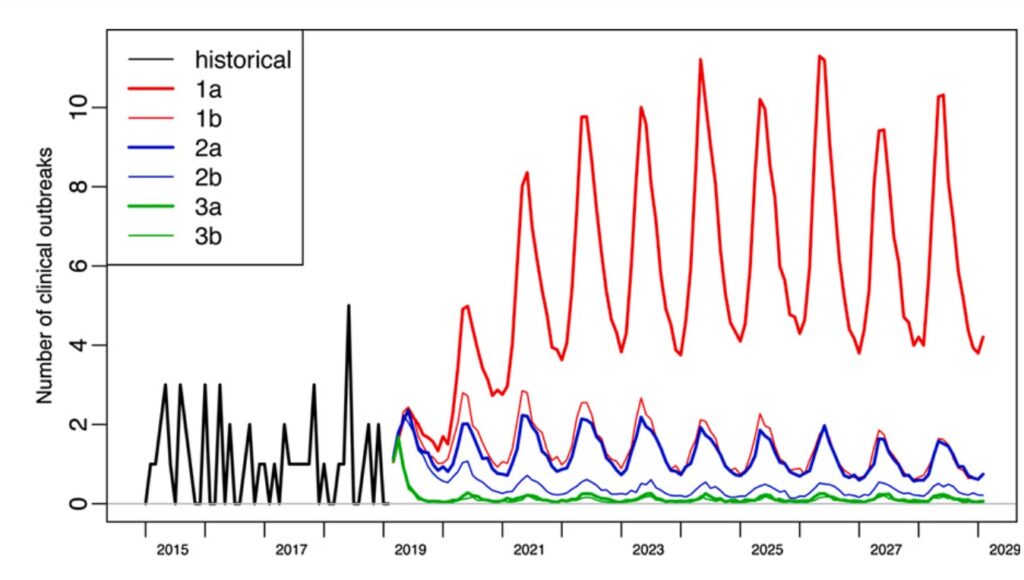Modelling population density and disease transmission in salmon farms
- Department SAMBA
- Fields involved Statistical modelling
- Industries involved Ocean
We have developed models to estimate population density in salmon farms, and to predict how diseases spread among the fish. The models are also used to simulate various scenarios in order to examine how different control measures may alleviate the burden of diseases.

Salmon farming is one of Norway’s largest export industries, and an important supplier of seafood globally. A significant contributor to the Norwegian economy, salmon farming provides jobs and stability for numerous coastal communities in the country.
Reducing disease burden in salmon farming
The parasitic salmon louse and virus diseases such as Pancreas Disease (PD) and Infectious Salmon Anaemia (ISA) threaten the sustainability of salmon farming. In collaboration with the Norwegian Veterinary Institute (NVI), we have developed models for the spread of lice and virus diseases. We have also used the models for scenario simulation (what-if analysis) to investigate the effect of measures for reducing the burden of these diseases. Such measures include vaccination, culling of infected fish stock and relocating fish farms.
Our models have been utilised in various projects for Norwegian authorities, aquaculture organisations, and private companies, both during and after the project period.
To learn more about this project, please contact:
Project: Host Density and pathogen transmission in salmon aquaculture: effects of increased production and pathogen control policies
Partner: Norwegian Veterinary Institute (NVI)
Funding: The Research Council of Norway
Period: 2016 – 2020
Further reading
Simulated effects of increasing salmonid production on sea lice populations in Norway – ScienceDirect, 09.10.2021.
Evaluating effects of different control strategies for Infectious Salmon Anaemia (ISA) in marine salmonid farming by scenario simulation using a transmission model – ScienceDirect, 16.04.2021.
A partly structured model for the abundance of salmon lice in salmonid farms – ScienceDirect, 18.08.2018.
